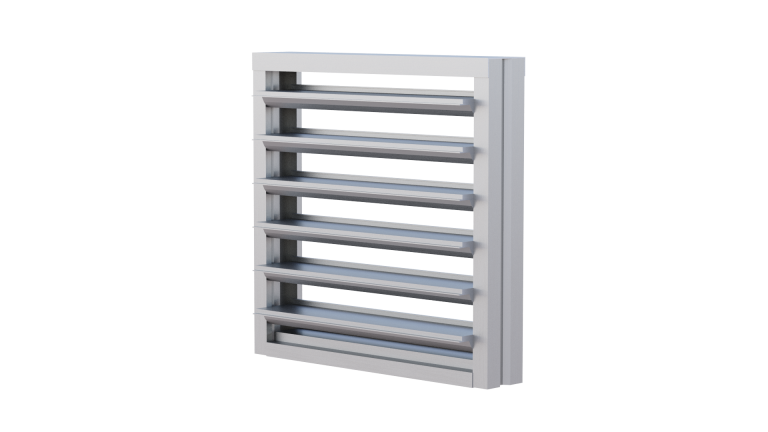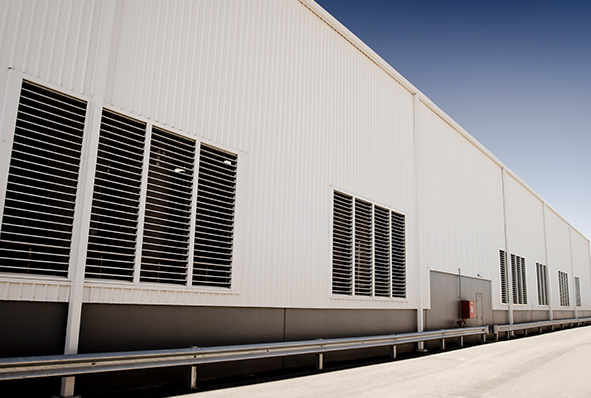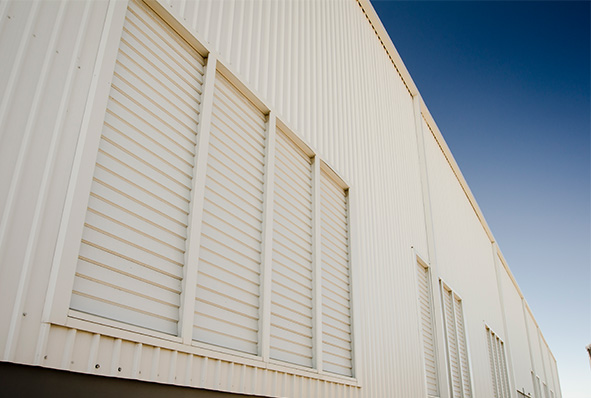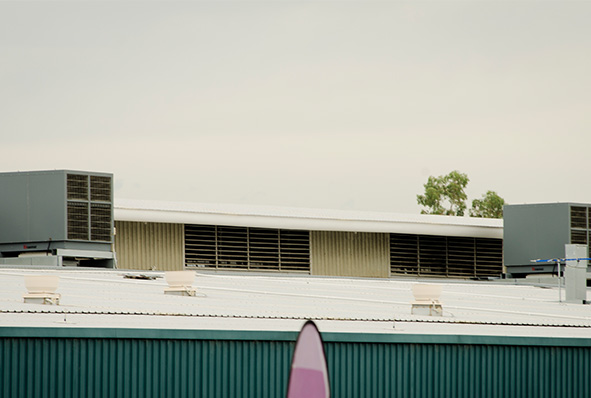
Huff® Operable Roof & Wall Louvre
Overview
The Arcadia Huff® Operable Roof and Wall Louvre is a Hybrid system with multiple uses for Industrial buildings of all kinds and is Tested and Engineered to AS 2428.1,2,4 & 5. Whilst this is often used for automatic fire venting and heat and smoke exhaust, the Arcadia Huff® Louvre has been extensively used in building design to provide natural ventilation for occupancy comfort. Huff can be operated using a variety of pneumatic, electric and manual control systems interfaced with building management systems for a range of operating modes, including manual override, and failsafe systems
Dimensions and Exhaust Capacity
Natural Draft Ventilation
The Huff® R220 ventilator has a very high discharge exhaust capacity when compared with conventional ventilators and being an operable ventilator, it provides an ideal option for natural draft ventilation. It is especially appropriate for areas requiring discharge of heat and fumes.
The quantity and size of Huff® R220 ventilators for natural draft ventilation can generally be determined as follows:
- Obtain total volume of area to be ventilated (Width x Length x Height).
- Multiply volume by required air changes per hour and convert to m³/second.
- Divide m³/second value by numbers of ventilators desired (suggest 6-8m spacing).
- Determine appropriate ventilator model from performance table below.
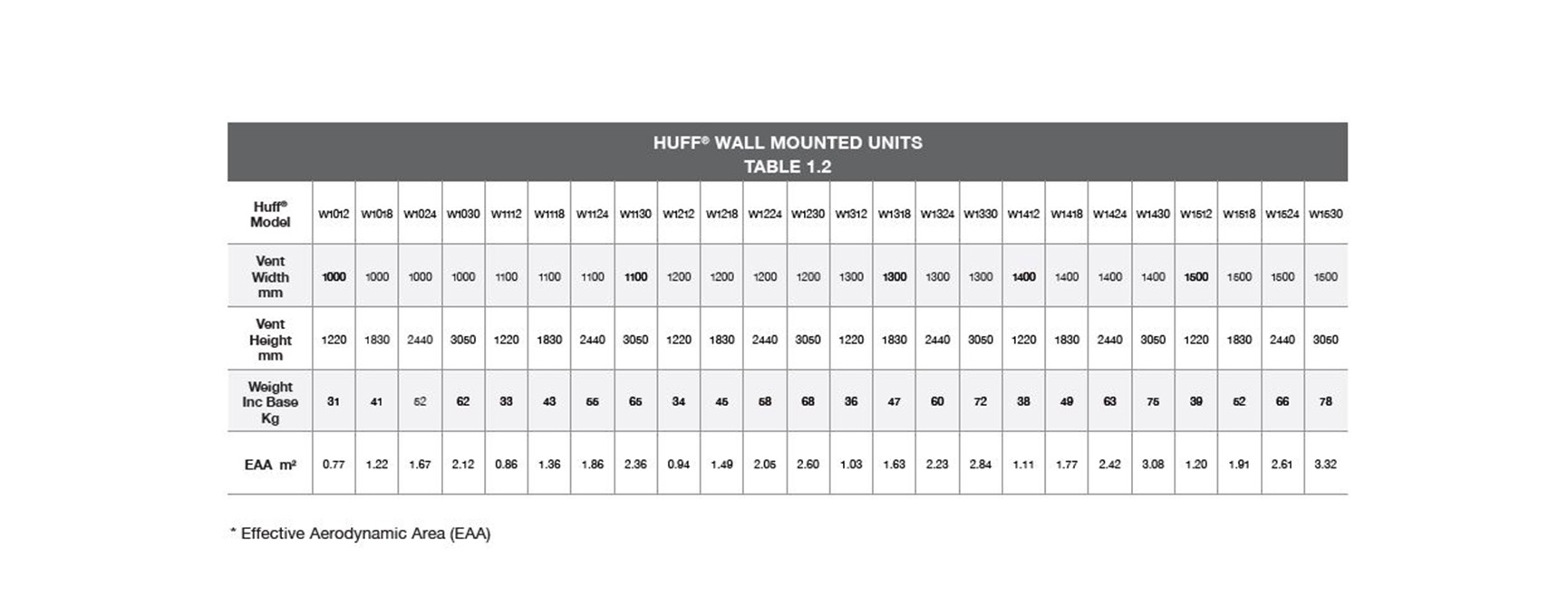

Features
Incorporating an effective Roof Ventilation system
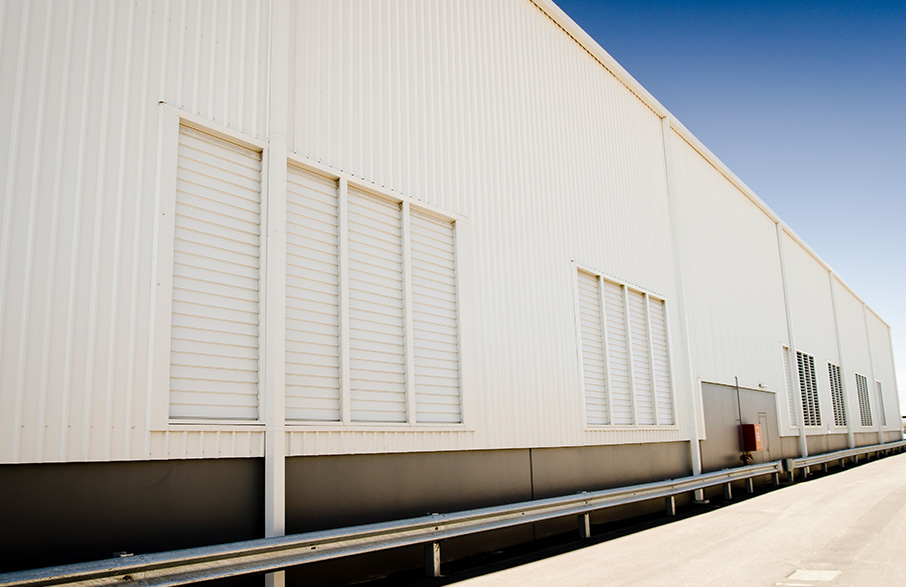
They key to effective natural ventilation of a building or structure is having a correctly designs, engineered and manufactured ventilation inlets and exhausts located and installed in the most appropriate position, which provides the most effective movement of air. Selection of appropriate roof ventilators will ensure that the building has the correct mix of fume, heat and smoke exhaust while ensuring the highest degree of weather resistance. Arcadia can assist with engineering design calculations and ventilation modelling, which when managed correctly will form a functional and effective natural ventilation solution.

Complimentary to fire and smoke systems

The Huff® Operating Wall Louvre compliments any roof, fire and smoke exhaust system with its high discharge coefficient meaning that less louvres are needed to fulfil the inlet air requirements. These can be automated in zones with pneumatic or electric controls.

Airflow performance of roof ventilation

Roof Ventilator Airflow performance is affected by a range of physical elements including the air passage configuration, the ventilator shape and the free flow of the air or that items that may cause turbulence. Increased air velocity may cause varying areas of additional turbulence and flow disturbance which affect the roof ventilator performance. A higher coefficient of discharge results in lower pressure drop over the face velocity meaning more effective air flow performance.

Providing rain defence capabilities
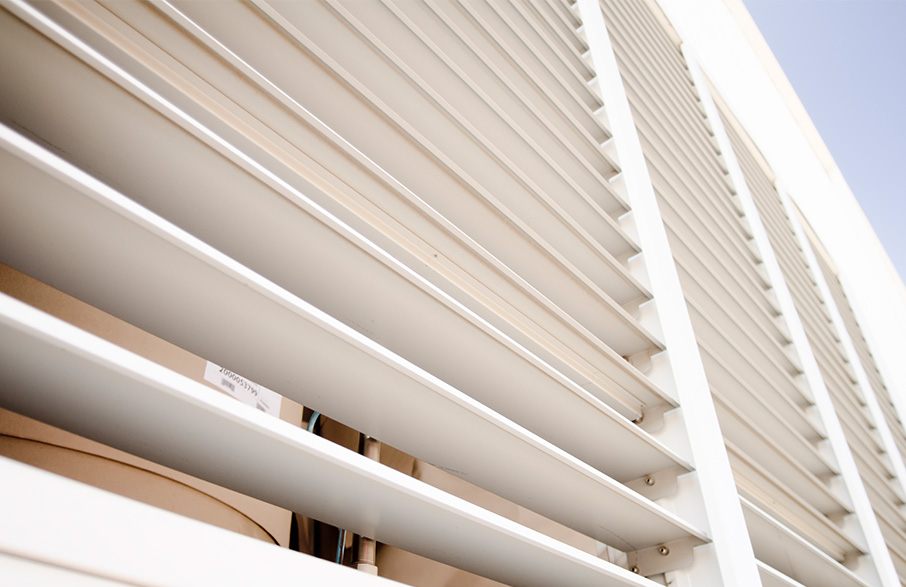
Rain Defence performance of a Roof Ventilator is tested to ascertain the performance of the ventilator in a range of wind speeds and weather conditions.

Applications

